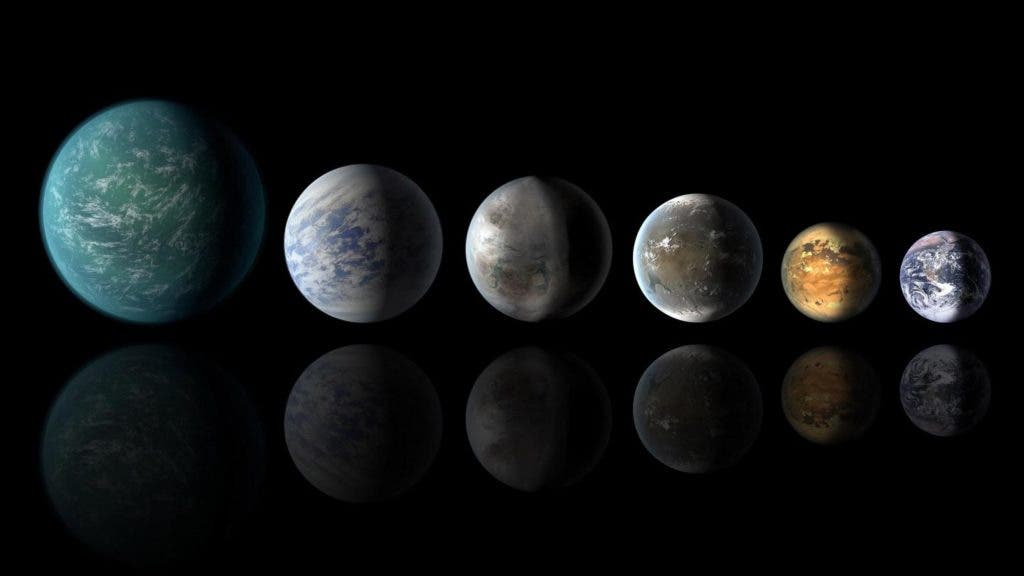The blue marble that we call home is the only planet in the solar system with a liquid ocean on its surface. Elsewhere in the cosmos, however, things may be radically different. According to a new model simulating the internal composition of thousands of exoplanets (planets orbiting alien stars), as many as 35% of all exoplanets larger than Earth are water-rich.
Water is an essential ingredient for life as we know it, which is why this latest study is so surprising — it suggests that water is present on planets outside our solar system quite frequently and in copious amounts.
By studying data from the Kepler Space Telescope and the Gaia mission, Dr. Li Zeng and colleagues at Harvard University found that many of the known planets may contain as much as 50% water. For comparison, Earth, a fairly ‘wet’ world, is only 0.02% water, by weight.
The team placed the >4,000 confirmed exoplanets into two groups: exoplanets whose radius averages about 1.5 that of Earth (rocky planets), and those averaging around 2.5 times the radius of Earth (super-Earths). The new model, which looked at how mass relates to radius in order to estimate the internal composition of planets, suggests that planets with a radius of around 1.5 that of Earth’s radius tend to be rocky planets (typically 5x the mass of the Earth). Meanwhile, exoplanets with a 2.5x-Earth radius (with a mass around 10x that of the Earth) are probably water worlds.
But that doesn’t mean that these numerous exoplanets are paradisiacal ocean worlds teeming with fish-like life. Instead, most of them are smothered in hot steam, more like the inside of a hellish steam cooker than a coral reef planet. These water worlds likely formed in similar ways to the giant planet cores (Jupiter, Saturn, Uranus, Neptune), which we find in our own solar system, the researchers reported at the Goldschmidt conference in Boston.
“This is water, but not as commonly found here on Earth”, said Li Zeng in a statement. “Their surface temperature is expected to be in the 200 to 500 degree Celsius range. Their surface may be shrouded in a water-vapor-dominated atmosphere, with a liquid water layer underneath. Moving deeper, one would expect to find this water transforms into high-pressure ices before we reaching the solid rocky core. The beauty of the model is that it explains just how composition relates to the known facts about these planets”.
But even in such conditions, life may find a way to appear and adapt in near-surface layers on these water worlds when the pressure, temperature and chemical conditions are appropriate. What’s for certain, though, is that scientists can expect to find a lot of exo-ocean-worlds in the near future, especially with the launch of the new James Webb Space Telescope slated for 2021.










